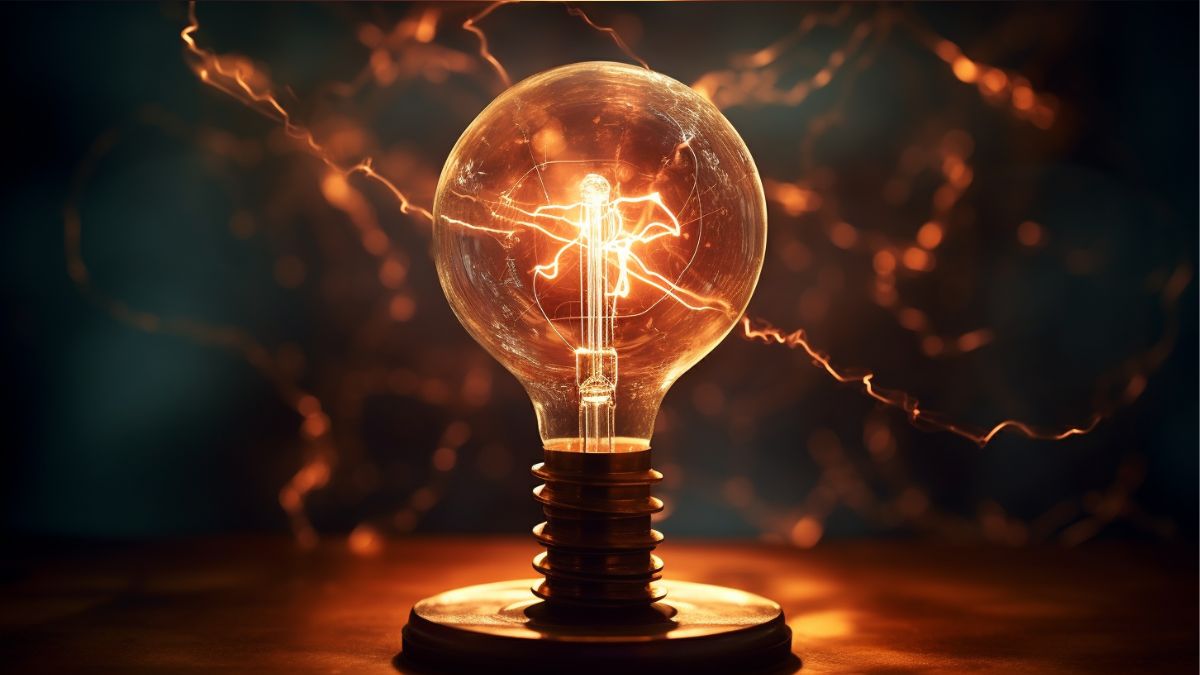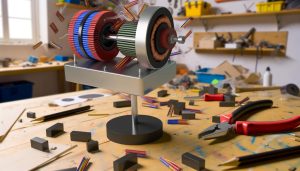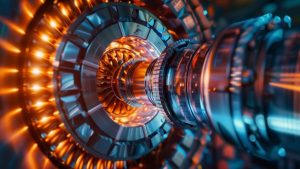Are you ready to dive into the electrifying world of magnets and their incredible ability to transform kinetic energy into electricity? Brace yourself for a mind-blowing journey where the seemingly ordinary magnets unveil their extraordinary power!
In this article, we will explore the fascinating role of magnets in generating electricity. From wind turbines harnessing the power of the breeze to hydroelectric plants capitalizing on the force of flowing water, magnets play a crucial role in these power generation applications. But their influence doesn’t stop there – geothermal power plants also benefit from this magnetic magic.
As we embark on this electrifying adventure, we will examine the advantages and limitations of magnet-based electricity generation. So, strap in and get ready to the intriguing world of transforming kinetic energy into electricity!
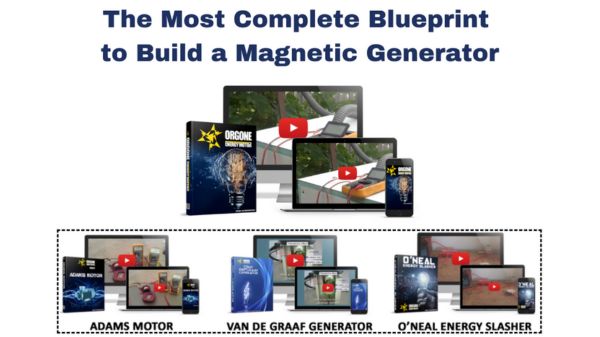
Key Takeaways
- Magnets play a crucial role in transforming kinetic energy into electricity.
- Electromagnetic induction is the underlying concept behind how magnets generate electricity.
- Generator designs utilize the interaction between magnets and conductors to create electric current.
- Magnet motors in electric cars and magnetic storage systems like hard drives rely on magnets to generate and store electrical energy.
How Magnets Generate Electricity
Do you ever wonder how those tiny magnets in your everyday devices have the power to transform the energy of movement into the electricity that powers them? It all comes down to the fascinating concept of electromagnetic induction. When a magnetic field changes near a conductor, such as a wire, it induces an electric current to flow.
This phenomenon was first discovered by Michael Faraday, known as Faraday’s law. The magnetic field created by the magnets interacts with the wire, causing electrons to move and generate electric current. This electric current can then be harnessed to power various devices.
Generator designs are based on this principle, where the movement of magnets relative to conductors creates a continuous flow of electricity.
Now that we understand how magnets generate electricity, let’s explore their applications in power generation.
Applications in Power Generation
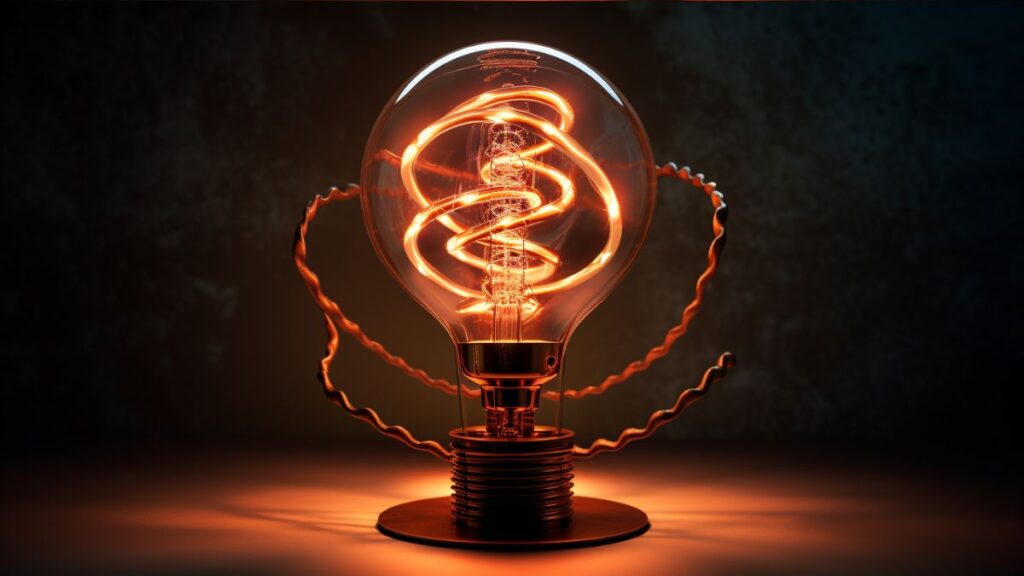
Imagine how you can harness the power of magnets to generate electricity and revolutionize power generation. Magnet motors, like the ones used in electric cars, rely on the interaction between a rotating magnetic field and a stationary magnet to produce motion and generate electrical energy.
Magnetic levitation, on the other hand, utilizes the repulsion between magnets to suspend objects in mid-air, allowing for frictionless movement and efficient energy transfer.
The storage systems, such as hard drives, use magnets to encode and store data, providing a reliable and compact solution for information storage.
Magnetic brakes harness the attractive force between magnets to slow down or stop moving objects, making them ideal for applications in transportation and industry.
Lastly, magnetic resonance imaging (MRI) uses powerful magnets and radio waves to create detailed images of the body’s internal structures.
With such diverse applications, magnets have proven to be a versatile and valuable tool in transforming kinetic energy into electricity. Now, let’s explore another method of harnessing renewable energy: wind turbines.
Wind Turbines
Wind turbines are like giant, magnificent, and majestic power-generating giants that harness the unstoppable force of the wind to create an abundance of clean and renewable energy. The efficiency of wind turbines has greatly improved over the years due to advancements in wind turbine technology and design. Engineers have developed innovative blade designs and optimized generator systems to maximize energy production.
However, wind turbine maintenance is crucial to ensure optimal performance. Regular inspections and repairs are necessary to address issues such as wear and tear, mechanical failures, and electrical malfunctions. Additionally, noise reduction measures have been implemented to address concerns about the impact of wind turbine noise on nearby communities.
Wind turbines continue to evolve and improve, making them a vital component of our renewable energy future.
Hydroelectric Power Plants
To fully understand the impact of hydroelectric power plants, you need to realize how they harness the immense power of flowing water to generate a significant amount of clean and renewable energy.
The turbine design plays a crucial role in this process, as it converts the kinetic energy of the flowing water into mechanical energy. The water storage system, often in the form of reservoirs, ensures a steady supply of water to the turbines, allowing for consistent electricity generation.
However, it’s important to consider the environmental impact of hydroelectric power plants, as they can disrupt natural habitats and alter the flow of rivers. Additionally, transmission lines are used to distribute the electricity generated by the plants to different areas.
Energy storage is also a key consideration, as excess electricity can be stored for later use.
Geothermal Power Plants
You won’t believe the incredible amount of heat that geothermal power plants tap into to generate massive amounts of clean and renewable energy for you. Geothermal energy extraction involves harnessing the natural heat from underground sources to power turbines and produce electricity.
Here are four key aspects of geothermal power generation:
- Underground heat sources: Geothermal power plants utilize the Earth’s internal heat, which is generated from the radioactive decay of minerals and the residual heat from the planet’s formation.
- Geothermal energy potential: The potential for geothermal energy is vast, as it’s estimated that just 0.1% of the Earth’s heat could meet the global energy demand for thousands of years.
- Geothermal energy sustainability: Unlike fossil fuels, geothermal energy is a sustainable resource that doesn’t deplete over time, making it an attractive option for long-term energy production.
- Geothermal power generation: By drilling deep into the Earth’s crust, geothermal power plants can access high-temperature reservoirs to generate electricity through steam or hot water.
These factors contribute to the advantages and limitations of geothermal power, which will be explored in the next section.
Advantages and Limitations
One of the key advantages of geothermal power is its sustainability, as it relies on a renewable and abundant heat source that doesn’t deplete over time. This makes it a promising option for meeting the world’s increasing demand for electricity while reducing greenhouse gas emissions.
However, geothermal power plants also have their limitations. One limitation is the availability of suitable geothermal resources, which are concentrated in specific regions. Another limitation is the high upfront costs associated with drilling and building geothermal power plants.
Efficiency analysis plays a crucial role in determining the viability of geothermal power plants. Factors such as the temperature of the geothermal resource and the magnetic field strength of the generators can affect the overall efficiency of the system.
Despite these limitations, geothermal power has significant renewable energy potential and should be considered as part of a diversified energy portfolio.
Frequently Asked Questions
Can magnets generate electricity on their own without any external input?
No, magnets cannot generate electricity on their own without any external input. However, magnetism and electricity have a fundamental connection, and understanding magnetic fields is crucial in harnessing magnetic energy for generating electricity.
What are some other applications of magnets in energy conversion besides power generation?
Magnets have a magnetic personality, attracting opportunities beyond power generation. They dabble in magnetic levitation, storage, resonance imaging, sensors, and separation. Their versatile magnetism makes them the life of the energy conversion party.
How do wind turbines utilize magnets to convert wind energy into electricity?
Wind turbines utilize efficiency improvements, magnetic field optimization, rotor design advancements, and integration of permanent magnets to convert wind energy into electricity. The impact of wind speed on electricity generation is also considered.
Are magnets used in all types of hydroelectric power plants?
Yes, magnets are used in most hydroelectric power plants. They offer advantages such as high efficiency, low maintenance, and lower cost. Additionally, their use has a minimal environmental impact. So, magnets are a powerful tool in hydroelectricity!
What are the main limitations or disadvantages of using magnets in power generation?
Efficiency concerns arise due to energy losses in magnet-based power generation. Maintenance requirements include regular inspection and replacement of magnets. Cost considerations include the high price of rare earth magnets. Environmental impact includes the production and disposal of magnets. Reliability issues may occur due to magnet degradation.
Conclusion
Magnets play a crucial role in transforming kinetic energy into electricity. By harnessing the power of magnetic fields, various applications in power generation have been possible. Wind turbines, hydroelectric power plants, and geothermal power plants all rely on magnets to convert mechanical energy into electrical energy.
One interesting statistic is that wind turbines equipped with magnets can generate enough electricity to power approximately 1,500 homes per year, reducing reliance on traditional energy sources and contributing to a more sustainable future.


